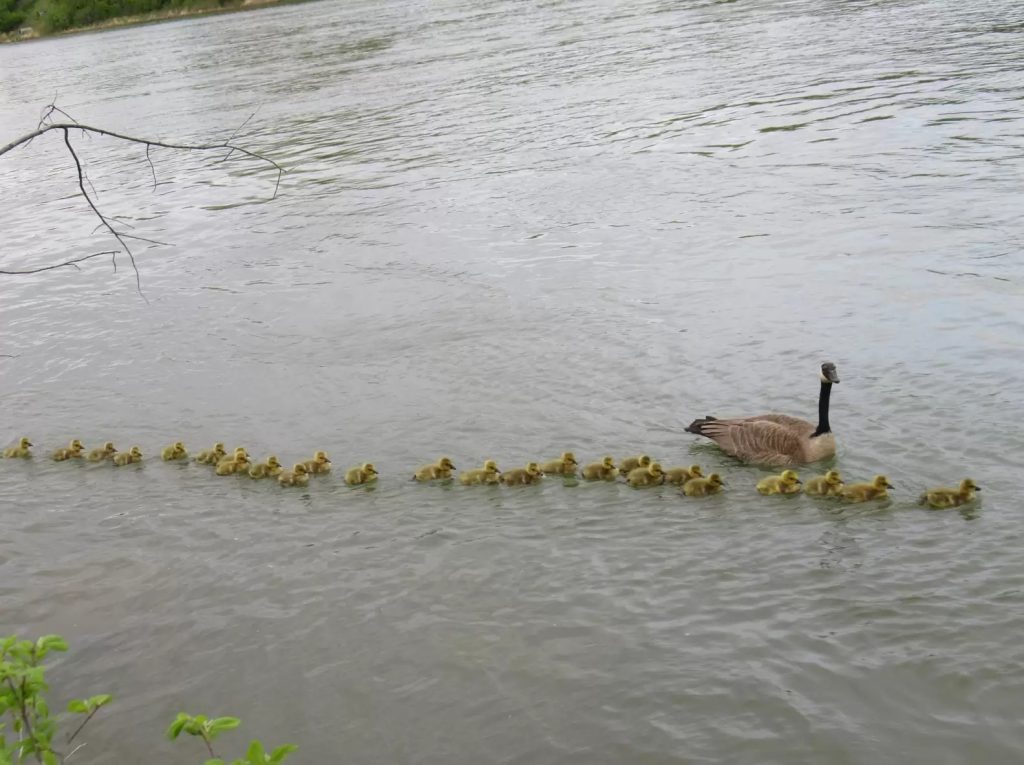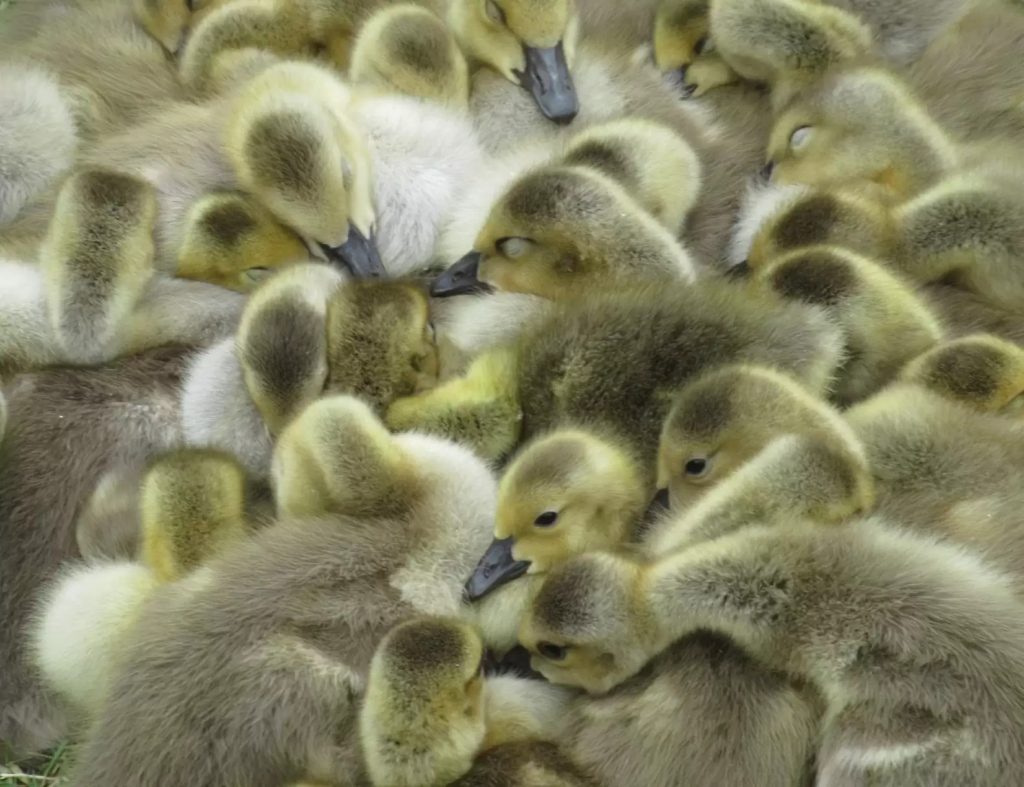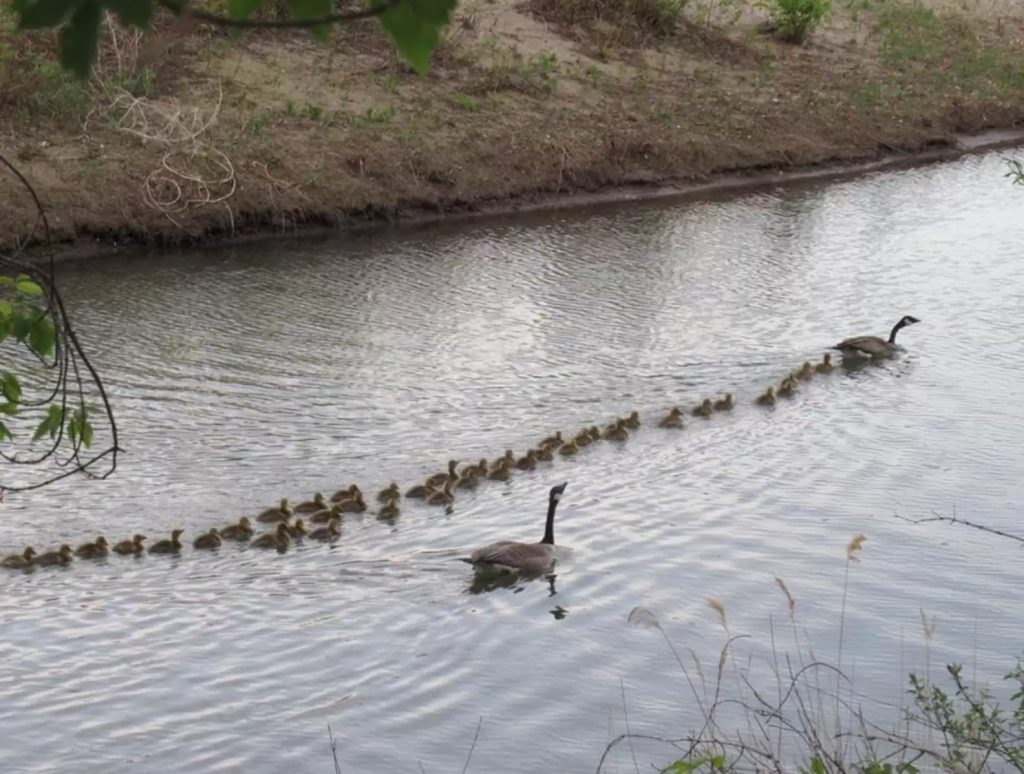Since the start of the global pandemic, Digout was taking long walks along the riverbank near his home in Saskatoon and capturing urban wildlife on his camera, whenever there was such a chance. During one of his walks, he got acquainted with a young family of adorable geese.
“I was out every night walking on the riverbank looking for beavers and, of course, there was a lot of geese activity as they were coming from the south and looking for a place to nest,” Digout said in his interview to journalists, “It was entertaining and also interesting to watch the geese fighting over places to nest and protecting their nests.”

In the last month of spring, the photographer noticed the first batch of goslings hatched.
“They’re so lovely when they’re little — just like little tennis ball with legs,” Digout said. “So I started taking photos of the newborns while I was waiting for the beavers to come around.”
During one of his evening walks, Digout saw a mother goose with extreme number of goslings – he counted as many as sixteen 16 fluffy balls crammed beneath their mother’s wings as they were gradually crawling under her feathers getting ready for their night sleep.


Digout was coming back to the site every night in search of the mother hero and babies, whose number was continuously growing every day
He counted twenty five babies one night and their number reached thirty on the next day. After two days he has already counted 47 youngsters next to their mother. Digout did not know back then that mother goose usually adopt babies whose mother could not raise them for some reasons.


Digout could clearly state that this mother was the perfect candidate for such a job: “It was amazing how calm she was with so many goslings around,” he said. She is such a patent and caring mother.


Despite that the gang brood has since divided into three sizable groupings, the mother hero and her partner are still raising 25 of their own babies. And they’ll keep them safe and sound until it’s time for them to take off towards the south for winter and return again the next season.
